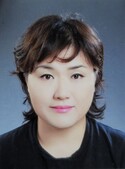
On the western periphery of Gyeongju, a city steeped in the ancient history of the Silla Kingdom, lies a village that has undergone a profound metamorphosis. Dorimaeul, a place once known for its quiet agricultural pursuits and pastoral solitude, has been re-carved into the national consciousness by the slow and steady march of time—and the fiery blaze of its ginkgo trees. What was once a humble landscape, a mere footnote in the region's vast historical tapestry, has emerged as a vibrant, living monument to autumn's fleeting beauty. This is the story of Dorimaeul, a testament to how nature's patient hand can reshape not only a landscape but also the destiny of a community.
For decades, Dorimaeul's ginkgo forest existed as a quiet secret, a clandestine beauty known to a dedicated few. It was not born of some grand civic design or aesthetic ambition. The trees were planted with a singularly practical purpose: to be a nursery for saplings. The neat, regimented rows that now lend the forest its distinctive, almost otherworldly geometry were a testament to efficiency, not art. Yet, in their methodical arrangement, a new kind of beauty was born. As the saplings grew, they stretched ever skyward, reaching for the light with an elegant, almost desperate verticality. This growth pattern, a consequence of their close proximity, created a forest of slender, graceful sentinels, standing in stark contrast to the more sprawling, unruly forms of wilder woodlands. This aesthetic serendipity—the unintentional beauty born from a pragmatic act—is the core of Dorimaeul’s charm.
The initial trickle of visitors was comprised almost exclusively of a certain kind of pilgrim: the photographer. These artists, with their keen eyes for light and composition, were the first to understand the profound visual poetry of the ginkgo rows. They saw how the low-angle sun of autumn would filter through the golden canopy, casting long, dramatic shadows that seemed to dance with the wind. They captured the moment of a single fallen leaf, a splash of amber against the dark, loamy soil. Their images, disseminated through social media and photography forums, acted as the first whispers of a growing legend. The forest, once dormant and unnoticed, was beginning to find its voice.
The digital age, with its capacity for instantaneous sharing and viral spread, acted as the accelerant. What started as a whisper soon became a roar. Dorimaeul, the hidden gem, was hidden no more. It was the rise of the "Instagrammable moment"—the visually striking, emotionally resonant scene that begs to be shared—that cemented its status. The linear elegance of the ginkgo trees, their leaves a uniform, vibrant gold, provided a perfect backdrop for self-portraits, artistic compositions, and, most notably, wedding photographs. The village became a pilgrimage site for couples seeking a unique and breathtaking setting for their vows, a place where their love story could be framed by the gilded splendor of a thousand trees. The term "wedding photography sanctuary" began to be whispered, and then stated, with increasing regularity.
This newfound fame, however, has not come without its challenges. The influx of visitors, particularly during the peak autumn season, has placed a strain on the village's infrastructure. The initial lack of public amenities, such as restrooms, highlighted the fact that Dorimaeul’s transformation was unplanned. It was a grassroots phenomenon, a testament to the power of word-of-mouth rather than a meticulously designed tourist initiative. In response to these growing needs, the local community has taken matters into its own hands. They have opened up access to existing facilities, such as the Dori 1-ri Saemaul Association Hall, and have begun to actively participate in the village's new identity.
Perhaps the most heartening aspect of Dorimaeul’s story is this community involvement. The village is not simply a passive backdrop for photographs; it is a living, breathing entity. In a symbiotic relationship with the tourists, the residents have begun to operate food and specialty markets during the autumn months. These markets are more than just a convenience for visitors; they are a direct line to the heart of the village. They offer a taste of local cuisine, a chance to purchase locally sourced products, and, most importantly, a moment of genuine human connection. The villagers, once observers of the growing phenomenon, are now active participants, sharing their culture and their land with the world. This interaction transforms the tourist experience from a purely visual one into a multi-sensory journey, grounded in the warmth and hospitality of the local people.
The story of Dorimaeul is, in many ways, a microcosm of the modern relationship between tradition, nature, and the digital world. It is a place where a quiet agricultural purpose was reimagined as a grand aesthetic statement. It is a testament to the power of a single photograph to change the fortunes of an entire community. It is a place where ancient trees stand in neat rows, but their golden leaves whisper a very modern story of discovery, community, and the enduring beauty of the natural world. As the autumn sun sets over the golden canopy, painting the sky with hues of orange and purple, the slender ginkgo trees of Dorimaeul stand as silent, elegant witnesses to their own beautiful, accidental destiny.
[Copyright (c) Global Economic Times. All Rights Reserved.]




























